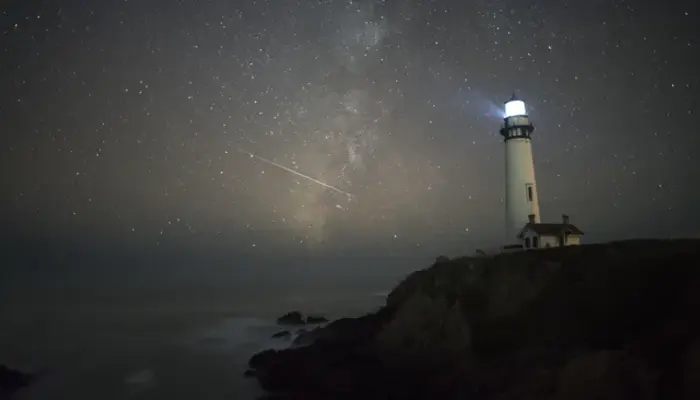Orionid Meteor Shower Set to Peak This Week

The annual Orionid meteor shower is set to peak this week. This celestial event results from the dust left behind by Halley’s comet as it travels around the sun every 76 years. The shower will be active from September 26 through November 22, with the peak occurring in the early hours of Monday, October 21.
During the peak, observers can expect to see around 23 shooting stars per hour, according to the American Meteor Society. The precise peak time is predicted to be at 1 a.m. EDT (0500 GMT). This year, the Orionids will coincide with the rise of the famous Orion constellation into the autumn sky.
Unfortunately, viewing conditions may not be ideal this year. A waning gibbous moon will be in the sky for most of the night, providing significant brightness that could obstruct visibility. The full Hunter’s Moon will rise just days before, on October 17. Due to the bright moonlight, the American Meteor Society warns that it will “severely hamper” views of the meteor display.
As a result, stargazers might find it more beneficial to observe the Orionids from home rather than seeking out dark skies. Even in less-than-ideal conditions, it’s still possible to catch sight of particularly bright shooting stars.
Read: Protests Erupt in Rawalpindi Over Allegations, 150 Arrested
Beautiful Meteor Showers of the Year
NASA calls the Orionids one of the most beautiful meteor showers of the year. Observers recognize these meteors for their speed and brightness. They strike Earth’s atmosphere at an incredible speed of 41 miles per second (66 kilometers per second), which equals approximately 148,000 mph (238,000 km/h).
Meteor showers occur when comets leave clouds of dust and debris that enter Earth’s atmosphere. As Earth travels through these debris fields, the particles collide with the atmosphere, creating the dazzling display known as shooting stars. The Orionids stand out as one of two annual meteor showers associated with Halley’s comet.
Halley’s comet is unique because it is the only known naked-eye comet that people can theoretically see twice within a human lifetime. It last visited the inner solar system in 1986 and is expected to return in 2061. Alongside the Orionids, Halley’s comet also produces the Eta Aquarid meteor shower, which peaks in early May each year.
Both the Orionids and the Eta Aquarids attract observers from both the Northern and Southern hemispheres.
This widespread visibility makes them popular among astronomy enthusiasts and casual stargazers alike.
As the peak of the Orionids approaches, those interested in watching should prepare for the event. Despite the bright moonlight, it is still worth taking a moment to look up at the sky. Stargazers might just spot a brilliant shooting star or two, creating a memorable moment in the beautiful autumn sky.
Follow us on Google News, Instagram, YouTube, Facebook,Whats App, and TikTok for latest updates
